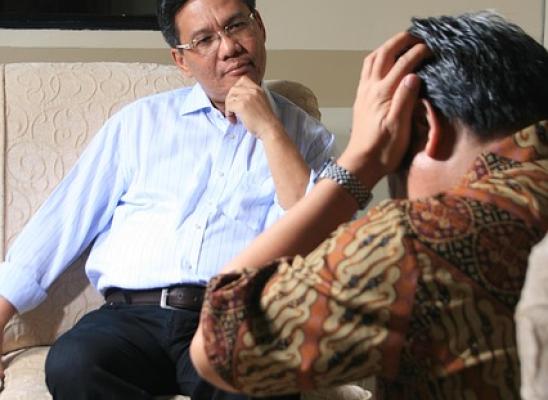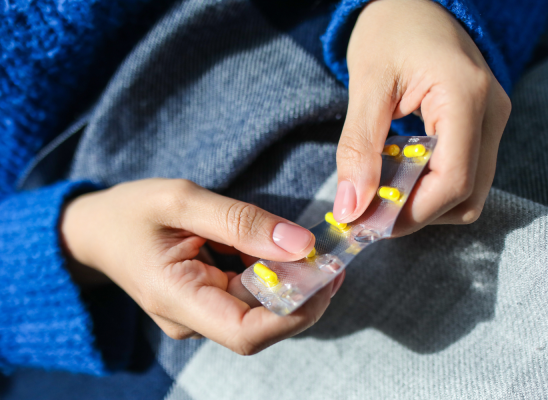Cognitive Behavioral Therapy and Habit Reversal Training: What’s the Difference?

Online test
Find out the severity of your symptoms with this free online test
Trichotillomania, commonly referred to as “trich” or hair pulling, is a mental health disorder characterized by compulsive hair pulling that results in noticeable hair loss, significant emotional distress, and impaired psychosocial functioning. For people living with trich, it can feel like a never-ending cycle.
The good news is that hair pulling is treatable and you can regain control. If you’ve been exploring treatment options, you’ve probably come across Cognitive Behavioral Therapy (CBT) and Habit Reversal Training (HRT). CBT and HRT are two of the most popular and effective evidence-based treatments for hair pulling and other body focused repetitive behaviors (BFRBs). While CBT and HRT are similar in a lot of ways and share the goal of reducing hair pulling, they do differ in a number of important ways. Understanding the qualities of each approach can help you decide the best fit for your healing journey.
What is Cognitive Behavioral Therapy?
Cognitive behavioral therapy (CBT) is a broad, structured form of psychotherapy that helps people better manage problems by changing patterns of thinking and acting. CBT is based on the idea that our thoughts, feelings, and behaviors are all connected and so if you change certain negative thoughts or actions, you can cope better. CBT has tons of scientific support and has proven to be helpful for a variety of issues including anxiety, depression, and BFRBs like trich and skin picking.
For hair pulling, the focus of CBT is often to uncover and reframe negative patterns and cognitive distortions, like self-criticism or perfectionism, which can fuel the urge to pull. It’s not just about stopping the behavior but also understanding the underlying patterns of thinking that drive the behavior and building healthier ways to cope with triggers like stress, anxiety, or boredom.
What is Habit Reversal Training?
Often the first-line approach for treating BFRBs, Habit Reversal Training (HRT) is a specialized form of CBT that zeroes in on the behavior itself. Developed specifically for repetitive habitual behaviors like hair pulling, the goal of HRT is to break the cycle of pulling via a series of steps, gradually replacing pulling with healthier behaviors. HRT is less about exploring the underlying emotions associated with pulling and more about replacing the physical habit with a competing action.
HRT includes three core components:
- Awareness training - Learning to recognize the triggers and warning signs of pulling. For example, you will discover where you pull, when you pull, how you pull, and whether or not you use tools, the context and environment where pulling generally occurs (e.g. in the bathroom, while watching TV) and what feelings or thoughts are usually experienced just prior to pulling.
- Competing response training – Learning alternative behaviors to pulling in response to the urge to pull, but that also makes pulling difficult. In other words, finding something where you can’t do the action and pull at the same time, like using a fidget or sensory toy, or putting your hands in your pockets until the urge passes.
- Social support – Your therapist might call this “motivation and compliance”. In this phase of treatment, you are using the skills you’re learning and enlisting the support of trusted family and friends to help with accountability.
Other components of HRT can include relaxation training and generalization training where you learn how to use your skills in various situations and environments.
CBT vs HRT
So, you might be thinking that CBT and HRT sound a lot alike, and they do. In fact, HRT is technically a CBT technique. However, they are different in important ways:
Scope
- CBT casts a wider net, addressing the psychological underpinnings of hair pulling along with the behavior.
- HRT is less about “why” you pull and more about “how” to stop. It is narrower in its approach, and faster acting, focusing solely on stopping the pulling through competing responses.
Time Commitment
- CBT sessions might explore multiple aspects of your mental health, making it more intensive, or requiring more sessions over time.
- HRT can be taught in a few sessions and practiced on your own.
Guidance
- CBT generally requires a licensed therapist who is trained in CBT.
- HRT’s simplicity means it can be guided by a specialist or even self-taught with proper resources.
Effectiveness: What Does the Research Say?
Both CBT and HRT are considered gold-standard treatments for trich and are backed by decades of research.
Studies consistently show HRT’s effectiveness, with success rates ranging from 50% to 90% in reducing pulling frequency, especially in the short term. Its structured, hands-on approach makes it particularly effective for those whose pulling is automatic or habitual.
CBT, while equally effective, shines in addressing co-occurring conditions like depression or anxiety, which affect up to 80% of people with trich. Research consistently supports that CBTs broader focus leads to long-lasting results by addressing the emotional underpinnings of hair pulling.
Which Approach is Right for You?
Choosing between CBT and HRT, or even combining them, depends on your needs, lifestyle, and pulling patterns.
HRT might be the better starting point if:
- Your pulling feels mindless, triggered by specific situations (like watching TV), or if you crave quick, tangible strategies.
- Its simplicity and focus on behavior make it accessible, especially if therapy isn’t immediately available.
- Many find relief within weeks, using tools like fidget toys or gloves to reinforce the competing response.
CBT might be a better place to start if:
- Your hair pulling is tied to deeper emotional issues
- You want a better understanding of your triggers and building resilience beyond just stopping the habit.
- You’re dealing with another mental health issues such as anxiety or depression,
For some, a hybrid approach works best. Starting with HRT to gain control over pulling, then transitioning to CBT to explore underlying causes, can offer both immediate relief and long-term growth.
Choosing Your Path
Trich is very personal and there is no one-size-fits-all solution. Both HRT and CBT are proven therapeutic approaches that can help you manage your hair pulling. Which one you choose depends on your own unique needs and preferences.
If you’re ready to explore treatment options, consulting with a licensed mental health provider can help you find the plan that is right for you. The key is taking that first step, knowing that with the right tools, breaking the cycle is within reach.
References
1. Bennett, L. P., & Ryznar, R. (2024). A review of behavioral and pharmacological treatments for adult trichotillomania. Psychology International, 6(2), 509-530. https://doi.org/10.3390/psycholint6020031
2. Grant, J. E., Redden, S. A., & Leppink, E. W. (2017). Trichotillomania and skin picking disorder. Oxford Medicine Online. https://psychiatryonline.org/doi/10.1176/appi.focus.20210013
3. Houghton, D. C., Maas, J., Twohig, M. P., Saunders, S. M., Compton, S. N., Neal-Barnett, A. M., Franklin, M. E., & Woods, D. W. (2016). Comorbidity and quality of life in adults with hair pulling disorder. Psychiatry research, 239, 12–19. https://pmc.ncbi.nlm.nih.gov/articles/PMC4855296/
4. Hofmann, S. G., Asnaani, A., Vonk, I. J., Sawyer, A. T., & Fang, A. (2012). The Efficacy of Cognitive Behavioral Therapy: A Review of Meta-analyses. Cognitive therapy and research, 36(5), 427–440. https://pubmed.ncbi.nlm.nih.gov/23459093/
Online test
Find out the severity of your symptoms with this free online test
Start your journey with TrichStop
Take control of your life and find freedom from hair pulling through professional therapy and evidence-based behavioral techniques.
Start Now



